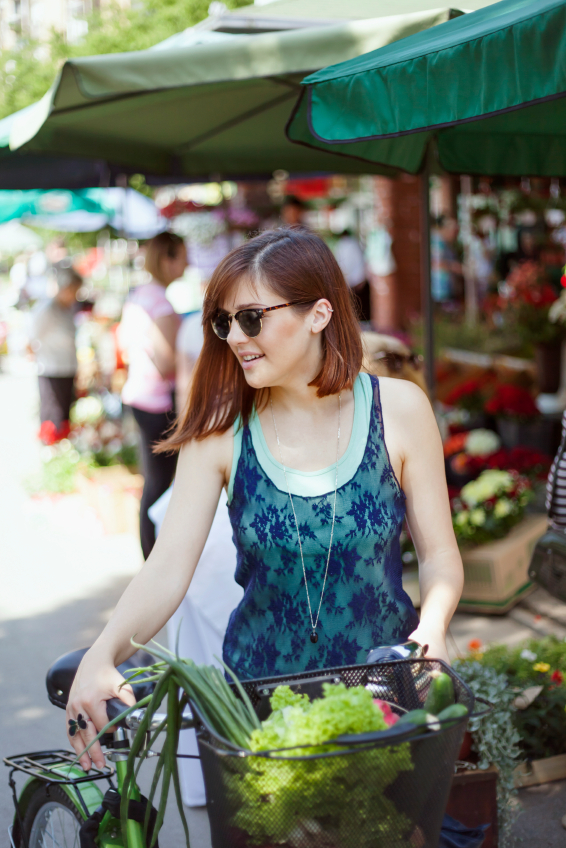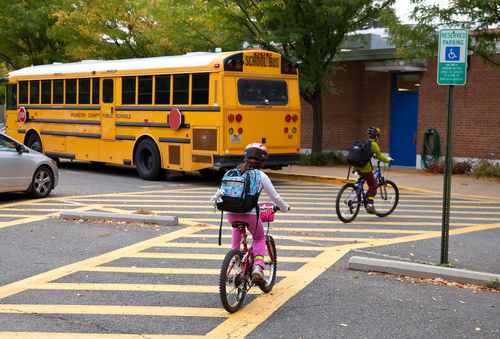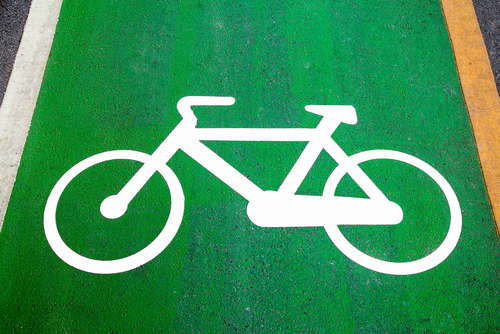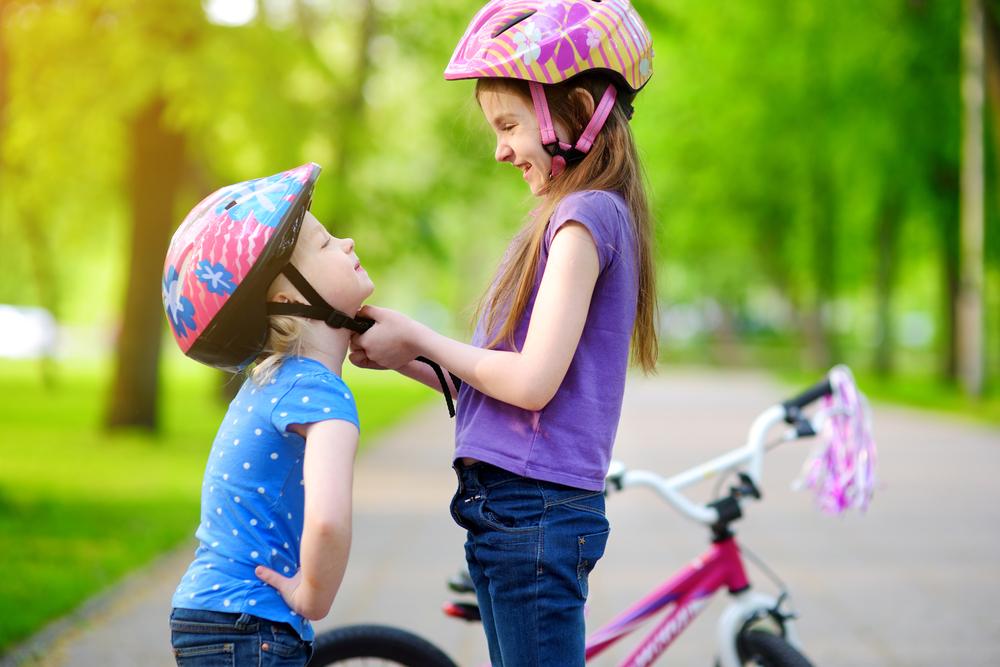Bike, Walk, Skateboard or Unicycle
Did you know, in the U.S., almost one-third of all our trips or errands are 1 mile or shorter and half are 3 miles or shorter? It’s easy to hop in the car, but a big source of good around the world is walking and biking for short trips. The health benefits of walking and biking are impressive. And it is so much nicer to be out enjoying the fresh air than stuck in traffic! Walking, biking or hopping on a scooter for short trips will save you money, reduce climate and air pollution and boost your health. That’s a win-win-win!
Your Impact
Action Steps & Tips
Introduction

In the U.S., almost one-third of all our trips or errands are 1 mile or shorter and half are 3 miles or shorter. It’s easy to hop in the car, but the secret to good health that most of the rest of the world knows is that walking and biking are great options for short trips. Choosing to walk, bike or scooter will save you money, reduce climate and air pollution and boost your health. That’s a win-win-win!
The health benefits of walking and biking are no joke. The Surgeon General recommends 30-45 minutes of moderate exercise (like walking or biking) on most, if not all, days of the week. Walking or biking for an errand that is one mile or even shorter can meet this goal. And it is so much nicer to be on a bike or walking and enjoying the fresh air rather than stuck in traffic!
Benefits of walking and biking:
-
Improve your health
-
Save energy and money
-
Reduce climate and air pollution
-
Enjoy the fresh air and skip the traffic!
11. Pick your favorite way to get around
The best type of active transportation will depend on where you live (city, suburb or rural), your trip length, the purpose of the trip, and your preferences. Important: be sure to check with your doctor before making any significant additions to your active routine.
Whether you choose walking for short trips, biking for longer trips or a more creative option like skateboarding or riding a scooter, they will all get you where you need to go. Pick an option that will be easy for you to fit into your schedule and make sure to put safety first.
Include the kids. If you have children, encourage them to bike or walk to school, to visit friends, and to sports events or other activities. This is healthy for them and sets a good standard for physical activity that may help keep them healthy and fit for the rest of their lives. Most schools have a walk or bike to school program with safety tips and activities.
22. Gear up
Whatever mode you choose, here’s a list of some things to help make your trip go smoothly:
Be prepared with basic gear. Wear comfortable, supportive shoes and comfortable clothing that fits the climate, like a hat and sunscreen in the summer, and gloves and a scarf in the winter. A good waterproof shell and pants will help you stay dry, if necessary.
Bicycle:
-
Buy a bike. There are many different bike models and options depending on how and where you will ride. Check out your local bike shop and try a few out. They can help you find the right bike for you. Used bikes are also a great option to save money.
-
Share a bike. Many cities are now starting bike share programs, see what is available in your area.
-
Rent a bike. If you are new to riding a bike or it has been a few years, rent a bike for the weekend and get reacquainted. It’s also a great way to try out different kinds of bikes before you buy one.
-
Fix your old bike. If you have an old bike gathering dust in the garage, take it to the local bike shop for a tune-up.
Bike Starter kit:
-
Helmet: Helmets greatly reduce your chance of a head injury and are the most important piece of gear! Find one that is comfortable and fits well.
-
U-lock: A standard u-lock will keep your bike safe when you need to lock it up.
-
Rear and Front lights: These lights are required by law after dark and can help motorists see you any time of day. White light go in the front, red light are for the rear.
-
Multi-tool: Lets you adjust things like your seat and fix small issues with your bike.
-
Flat Kit: A basic flat kit that includes spare tubes, a tire lever, and a small pump.
-
Bike rack, panniers, basket or saddlebags: If you plan to commute for work or pick up groceries, get a rack or basket to carry your stuff.
-
Extra seats: If you have small kids, consider a bike trailer to tow them behind or a bicycle seat that fits on your bike. Or a bicycle built for two for older kids!
33. Plan your trip
Before you leave on your ride, take a bit of time to find the best and safest route for your trip.
Plan your route. Choose a route with bike lanes, if possible, and less congested roads for safety. Check with your local bike shop for recommendations on local bike maps or resources. Google Bike Maps can be a helpful tool as well.
Timing. Figure out how long your trip will take. Typical walking speeds are 3 miles per hour or 20 minutes a mile. Biking generally takes around 6 minutes per mile. However, speeds will vary, so time yourself to get an idea of how long most trips will take.
Storing your bike. Check to see if there are bike lockers or bike racks near your destination to store your bike. If you bike to work, talk to your employer about facilities for employees like lockers, bike racks, and showers. Most train and subway stations have facilities to store your bike while you’re gone or allow you to bring your bike along with you to your destination.
44. Be safe
With many cities expanding bike lanes, it is becoming safer to ride your bike, scooter or skateboard. Here are the basics of traveling safely:
Lights, helmet & reflective gear. Wear a helmet and make sure you have working lights for trips at night. Wear reflective clothing or a vest as well for safety.
Learn local rules. Make sure to follow basic safety rules for whatever transportation you choose. Follow all road signs and rules.
Be alert. Be aware of what motorists are doing around you. Ride predictably, using turn signals and obeying traffic laws. Ride in the direction of traffic and don’t ride too close to parked cars, so you can avoid a sudden door opening.
Safety videos. Check out these bike safety videos for both adults and kids. Most of these rules also apply to skateboarding and other transport modes. Make sure to follow basic safety rules! For skateboarding and electric bicycles, there may be some additional rules or areas where they are prohibited. Check for local rules in your area.
Lock it up. Invest in a good lock and lock your bike properly. A good lock can be expensive but will save you money in the long-run. U-locks are generally tough enough to stand up to common lock cutters. Make sure to lock both your bike frame and a tire if possible. Buying an extra cable to lock both tires is also a good option. There are many videos on YouTube showing how to lock a bike properly.
55. Maintain your gear & go for a ride!
Keep your bike, skateboard, scooter or rollerblades tuned up and in good shape. Keep tires pumped up and check your brakes and gears regularly. Make sure your helmet is in good working order and fitted properly. Get a small repair kit to bring with you in case of emergencies. Being prepared can save you from being inconvenienced by a flat tire, broken wheel or even protect you from injury in a crash.
Two skills you may want to learn before heading out on your bike are changing a flat tire and performing basic bike maintenance. Check out these videos on changing a flat tire and basic bike maintenance. Need a little more hands-on help? Look for classes offered by your local bike shop or community center.



